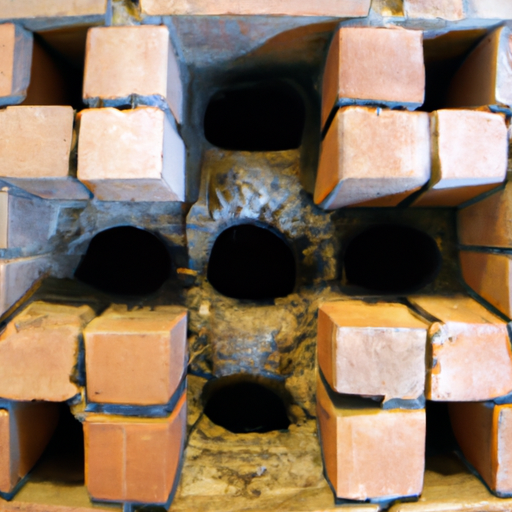What is a Kiln Made Of? Unveiling the Materials Used!
A kiln is a specialized oven or furnace used for various purposes, such as firing pottery, drying lumber, or even creating glass. These versatile structures are constructed using specific materials that can withstand high temperatures and provide insulation. In this article, we will explore the materials commonly used to build a kiln and shed light on their properties.
1. Refractory Bricks
Refractory bricks are the primary building blocks of a kiln. These bricks are specially designed to withstand extreme temperatures without cracking or crumbling. They are made from a combination of clay, silica, alumina, and other refractory materials. The high alumina content in these bricks gives them excellent heat resistance, making them ideal for kiln construction.
2. Insulating Materials
Insulating materials are crucial for maintaining the desired temperature inside the kiln while preventing heat loss. Commonly used insulating materials include ceramic fiber blankets, vermiculite boards, and refractory ceramic fiber. These materials have low thermal conductivity, which means they can effectively trap heat within the kiln, allowing for efficient and controlled heating.
3. Kiln Shelves
Kiln shelves, also known as kiln furniture, are flat surfaces where the items being fired or dried are placed. These shelves are typically made from a combination of refractory materials, such as cordierite or silicon carbide. Cordierite shelves are known for their excellent thermal shock resistance, while silicon carbide shelves can withstand higher temperatures and are more durable.
4. Heating Elements
Heating elements are responsible for generating the heat required inside the kiln. The most common types of heating elements used in kilns are electric coils or wires made from materials like nichrome or kanthal. These materials have high electrical resistance, allowing them to convert electrical energy into heat efficiently. The heating elements are strategically placed within the kiln to ensure even distribution of heat.
5. Kiln Coating
To protect the kiln’s interior from chemical reactions and wear, a kiln coating is often applied. This coating is typically a refractory material, such as kiln wash or kiln cement. Kiln wash is a mixture of alumina hydrate and kaolin, which forms a protective layer on the kiln shelves and prevents glazes from sticking. Kiln cement, on the other hand, is used to repair cracks or gaps in the kiln’s structure.
In conclusion, a kiln is made of various materials that work together to create a controlled and efficient heating environment. Refractory bricks provide the kiln’s structure, while insulating materials help maintain the desired temperature. Kiln shelves offer a surface for placing items, and heating elements generate the necessary heat. Lastly, a kiln coating protects the kiln’s interior from chemical reactions and wear. Understanding the materials used in kiln construction is essential for anyone interested in pottery, glassmaking, or other kiln-related activities.




